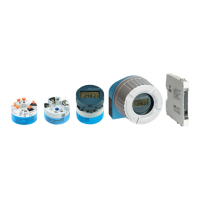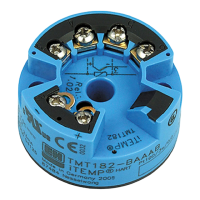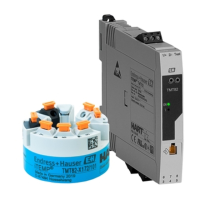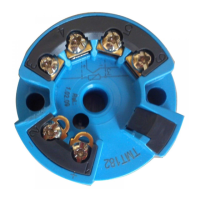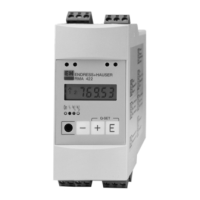Do you have a question about the Endress+Hauser iTEMP Pt TMT180 and is the answer not in the manual?
Provides a quick guide to commissioning the system using short form instructions.
Defines the intended application and limitations of the temperature head transmitter.
Covers general guidelines for installing, commissioning, and operating the device safely.
Outlines safety requirements and compliance standards for the device's operation.
Provides instructions on how to proceed with product returns according to policy.
Explains the meaning of various safety pictograms and symbols used in the manual.
Details how to identify the transmitter unit, including legend plate information.
Shows an example of the head transmitter's legend plate for identification.
Specifies environmental and physical conditions required for proper installation.
Provides dimensional information for the head transmitter for installation planning.
Describes suitable locations for mounting the sensor connection head or field housing.
States that there are no limitations on the installation angle of the device.
Step-by-step guide for installing the head transmitter in a standard European connection head.
Step-by-step guide for installing the head transmitter in a North American context.
Presents the terminal layout and wiring diagrams for the head transmitter.
Details how to connect sensors and power supply to the transmitter terminals.
Explains the importance and method of grounding the transmitter for effective shielding.
Provides guidance on grounding the transmitter to minimize noise in the signal loop.
Describes the process of setting up the transmitter using a PC and configuration software.
Instructions for installing the ReadWin® 2000 configuration software.
Steps for connecting the transmitter to a PC using the configuration kit.
Verifies connections and checks the basic functionality of the installed transmitter.
Confirms that the transmitter is operational after power supply connection.
Explains how to configure the transmitter parameters using the PC software.
Lists and describes all configurable parameters and their settings for the transmitter.
Describes how to check the sensor for faults by testing or replacing it.
Provides a systematic approach to identifying and resolving faults using checklists.
Addresses common errors that occur without specific error messages being displayed.
Lists and explains general application errors and their causes/actions.
Details specific errors related to RTD sensor connections and their resolution.
Lists available spare parts for the head transmitter installation.
Reiteration of return policy instructions.
Guidelines for the proper disposal of the transmitter according to local regulations.
Tracks changes in software versions and their compatibility with ReadWin® software.
Describes the basic principle and system architecture of the temperature transmitter.
Specifies the input types, sensor compatibility, and measurement ranges supported.
Details the analog output signal (4-20 mA) and breakdown information according to NAMUR NE 43.
Specifies the required supply voltage, ripple, and connection details.
Lists key performance metrics like maximum error, influence of supply voltage, and ambient temperature.
Defines acceptable installation angles and areas for the transmitter.
Specifies ambient temperature limits, climate class, and degree of protection.
Provides details on the physical dimensions, weight, material, and terminals of the transmitter.
Describes how users interact with the transmitter via PC software, as there are no direct display elements.
Lists relevant certifications, approvals, and standards compliance for the device.
| Type | Temperature Transmitter |
|---|---|
| Input | Pt100, Pt1000 |
| Output | 4...20 mA, HART |
| Ambient Temperature Range | -40 to +85 °C |
| Protection Class | IP66 |
| Housing Material | Stainless steel |
| Configuration | Via PC |
| Sensor Type | Pt100 |


